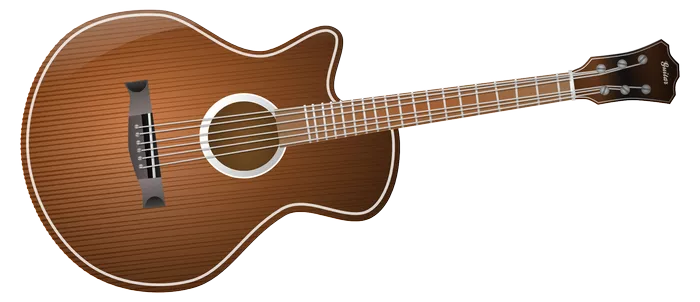The lap steel guitar, with its distinctive sound and unique playing technique, has captivated musicians across various genres. As an instrument that rests horizontally on the player’s lap, it offers a different playing experience compared to traditional guitars. One common question that aspiring musicians often ponder is, “Is the lap steel guitar easy to learn?” In this article, we delve into the factors that contribute to the learning curve of the lap steel guitar, providing insights for those considering this melodic journey.
Understanding the Basics: A Different Approach to Strings
The lap steel guitar differs significantly from its conventional counterpart, introducing a unique set of challenges and advantages. Unlike standard guitars, which are played vertically and involve fretting with one hand while strumming or picking with the other, the lap steel guitar is played horizontally, typically with a slide bar.
The strings on a lap steel guitar are elevated above the fretboard, allowing the player to slide the bar along the strings to create different pitches. While this eliminates the need for complex fingerings and chord shapes, it introduces a new skill set centered around precise slide control and intonation.
Slide Technique: A Key Element
One of the defining characteristics of lap steel guitar playing is the use of a slide bar, usually made of metal or glass. The slide is placed on the strings, and the player varies the pitch by sliding it along the length of the strings. Achieving accurate intonation and smooth transitions between notes is a skill that requires practice and a keen ear.
For beginners, mastering the slide technique can be both a rewarding and challenging aspect of learning the lap steel guitar. The absence of frets means that players must rely on their sense of pitch and muscle memory to produce accurate and in-tune notes. However, once the fundamentals of slide technique are grasped, the lap steel guitar opens up a world of expressive possibilities.
Open Tunings: A Gateway to Sonic Exploration
Unlike standard guitars, lap steel guitars are often tuned to open tunings, where the strings form a chord when played open, without any fretting. This characteristic simplifies the learning process for beginners, as it reduces the complexity of traditional chord shapes. Open tunings also facilitate the creation of rich, resonant sounds with minimal finger movement.
Common open tunings for lap steel guitars include Open D and Open G, among others. These tunings provide a platform for experimentation and creativity, allowing players to explore various melodic possibilities without the need for intricate finger placements. For beginners, this aspect of lap steel guitar playing can make the instrument more approachable and encourage early musical exploration.
Minimal Fretting: Simplifying the Learning Curve
The absence of fretting in lap steel guitar playing simplifies the learning curve, especially for those who may find traditional guitar fingerings challenging. With the focus on slide technique and open tunings, beginners can quickly start producing melodic and expressive sounds on the lap steel guitar.
The simplicity of the fretboard also allows for easy visualization of scales and intervals. This can be advantageous for those who are new to stringed instruments, as it provides a clear and uncluttered path to understanding the relationships between different notes.
Listening and Ear Training: A Critical Component
Playing the lap steel guitar effectively relies heavily on listening skills and ear training. Since there are no frets to guide the fingers, players must rely on their ears to discern pitch and maintain accurate intonation. This aspect of lap steel guitar playing contributes to a heightened sense of musicality and a deeper connection to the instrument.
For beginners, developing a good ear is a gradual process that involves listening to various musical genres, recognizing different musical intervals, and practicing along with recordings. The lap steel guitar’s emphasis on ear training can be an enriching experience, enhancing a musician’s overall musical perception.
Learning Resources: A Wealth of Information
As interest in the lap steel guitar has grown, so too have the available learning resources. Online tutorials, instructional books, and video lessons provide aspiring lap steel guitarists with a wealth of information to aid in their musical journey. These resources cover everything from basic slide technique to advanced playing styles, offering guidance and inspiration at every skill level.
Additionally, joining online communities or forums dedicated to lap steel guitar enthusiasts can provide valuable insights, tips, and a sense of camaraderie. Engaging with fellow learners and experienced players can enhance the learning experience and foster a supportive environment for skill development.
See Also: A Step-By-Step Guide to Tuning Your Guitar to Different Keys
Conclusion: The Lap Steel Guitar as a Gateway to Sonic Expression
In answering the question of whether the lap steel guitar is easy to learn, it becomes evident that the instrument offers a unique and accessible path to sonic expression. While certain aspects, such as mastering slide technique and developing a keen ear, may pose initial challenges, the simplicity of the fretboard and the use of open tunings make the lap steel guitar an inviting instrument for beginners.
Ultimately, the ease of learning the lap steel guitar is influenced by factors such as a player’s musical background, dedication to practice, and willingness to explore new sonic territories. As with any musical instrument, consistent practice and a passion for sonic exploration are the keys to unlocking the full potential of the lap steel guitar. Whether you’re a seasoned guitarist looking for a new avenue of expression or a beginner embarking on your musical journey, the lap steel guitar beckons with its distinctive sound and the promise of melodic discovery.


